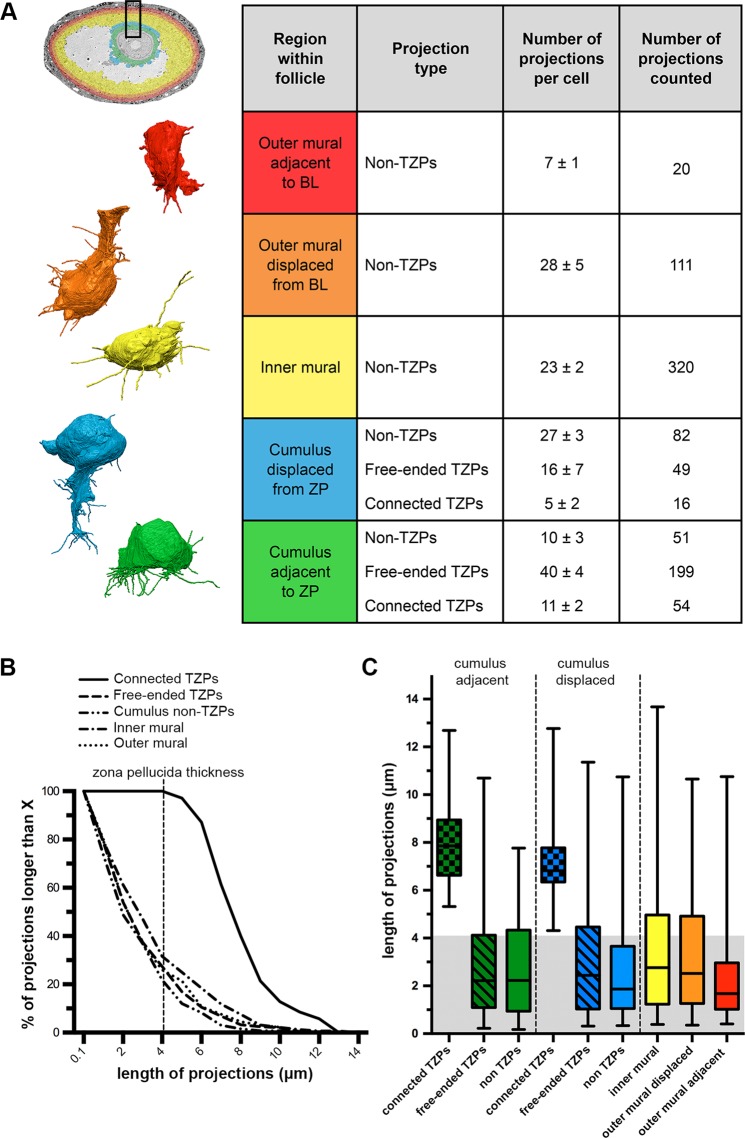Figure 7.
Summary of cytoplasmic projections in somatic cells of antral ovarian follicles. (A) Summary table describing the number of projections per cell in each region of the ovarian follicle. Outer mural adjacent to BL refers to cells found directly adjacent to the basal lamina (n = 3). Outer mural displaced from BL refers to cells found two-to-three cell diameters away from the basal lamina but that still connect to it through a thick cytoplasmic process (n = 4). Inner mural refers to cells not connected to the oocyte or to the basal lamina (n = 14). Cumulus displaced from ZP refers to cells found two-to-three cell diameters away from the zona pellucida but that still connect to the oocyte through TZPs (n = 3). Cumulus adjacent to ZP refers to cells found directly adjacent to the zona pellucida (n = 5). Numbers are shown as mean ± standard error of the mean. To the left of the table are representative reconstructions of one cell from each of the cell groups in the table. Follicle insert is colored to represent the different cell groups. (B) Distribution of the length of projections from each group. All cumulus cells, regardless of the position of their cell body, were pooled together for the groups free-ended TZPs, connected TZPs, and cumulus non-TZPs. Outer mural granulosa cells were also pooled together. (C) Length of projections from every cell group represented as quartiles. Lower and upper edges of the box represent the first and third quartiles, respectively (25th and 75th percentiles). The line in the middle of the box represents the median (50th percentile). The lower and upper limits of the “whiskers” represent the minimum and maximum values, respectively. Cell groups are divided as described in (A). Gray-shaded region represents the thickness of the zona pellucida (~4.1 μm). Note that ~25% of all of the projections from each cell type are longer than the width of the zona pellucida (suggesting they could contact the oocyte if the cell body is at an appropriate distance).

